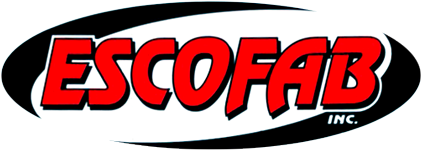Metal fabrication, the process of cutting, bending, and assembling metal structures from raw materials, is a value-added process. Some examples of metal-fabricated products include bolts and screws, hand tools, car parts, and pipe fittings, to mention a few.
Another description is conforming sheet metal and other types of flat metals into a specific shape through certain processes. Metal fabrication workshops are often referred to as fab shops. Remember that metal fabrication is an umbrella term involving many different types of metal fabrication processes.
The process starts with the idea that it is forged out of necessity.
How is the fabrication process done?
Metal fabrication starts with the planning phase. Metal fabrication shops employ several specialists, from welders, boilermakers, blacksmiths, and ironmakers, depending on the type of fabrication. These professionals are responsible for transforming raw materials into their final shape. The term metal fabrication is an overarching term that involves many different processes.
A client may approach a workshop and request a certain amount of a specific metal product to be fabricated. For example, a client may require a certain number of bolts of a specific design and size to be manufactured. The client may already have the specifications, or the workshop may need to draw up the specifications through specialized software such as IronCAD.
The design phase will highlight a few important factors, such as which raw materials will be best suited for the job and which processes will manufacture the product to the highest quality.
Once the design has been drawn up, the technicians can fabricate the final product.
Materials
As previously mentioned, there are a few options for the type of materials that may be used in the process. The type of material will depend on the final product. Essentially, the various raw materials may include metal, formed and expanded metal, welding wire, flat or sectional metal, castings, and fittings.
The actual fabrication process involves various processes, including:
- Welding
- Punching
- Casting
- Forging
- Shearing
- Brazing
- Drawing and spinning
- Hydroforming
- Die-cutting
- Shrinking
- Finishing
- Roll forming
- Stretching and stamping
- Spinning
Let’s take a closer look at some of the processes:
Forging
It is one of the oldest methods used in the industry. Metal is heated so it can be bent, shaped, and formed. This is usually done by hand.
Casting
Molten metal is poured into a cast to form a specific shape. It is cooled until it is hard.
Machining
This process is a subtractive shaping process. Unwanted material is removed until the metal reaches the desired shape. Machining includes turning, milling, and drilling. CNC machines are the most popular machinery used in turning, which rotates the metal at a slow enough speed so that cutting tools may remove unwanted metal.
Punching
This process uses specific turrets to punch holes in specific locations in the metal.
Welding
Welding is a process of joining different pieces of metal by applying pressure and heat. The most common and popular forms of welding include:
- Stick welding
- Arc welding
- TIG welding
- Flux-cored welding
- MIG welding
